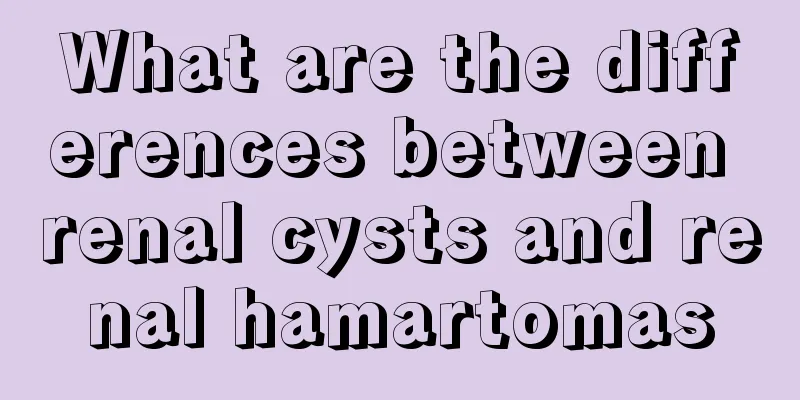How is DNA damage repaired?

|
Simply put, the repair of DNA damage is the phenomenon of restoring damaged DNA in cells under the action of many kinds of enzymes. If this technology is successful, we can use it to treat tumors or fight aging in a timely manner. It will bring many benefits to humans and can also help us understand the mechanism of gene mutation. The following is a detailed introduction to the repair method of DNA damage. Repair method Photoresurrection Also called photoreversal. This is a repair process in which the photoreactivation enzyme recognizes and acts on the dimer under the irradiation of visible light (wavelength 3000-6000 angstroms), using the energy provided by light to open the cyclobutyryl ring (Figure 2). Photoreactivation enzymes have been found in lymphocytes and skin fibroblasts of bacteria, yeast, protozoa, algae, frogs, birds, marsupials and higher mammals, and humans. Although this repair function is common, it is mainly a repair method used by lower organisms. As organisms evolve, its role is weakened. The photoreactivation process is not that the PR enzyme absorbs visible light, but that the PR enzyme first combines with the thymine dimer on the DNA chain to form a complex. This complex absorbs visible light in a certain way and uses light energy to cut the CC bond between the thymine dimers. The thymine dimers become monomers, and the PR enzyme dissociates from the DNA. Excision repair Also known as cutting and repair. It was first discovered in Escherichia coli and includes a series of complex enzymatic DNA repair and replication processes, which mainly include the following stages: the endonuclease recognizes the DNA damage site and makes a cut at the 5' end, and then the damage is removed from the 5' end to the 3' end under the action of the exonuclease; then, under the action of DNA polymerase, a new single-stranded DNA fragment is synthesized using the complementary chain corresponding to the damaged site as a template to fill the gap left after the excision; finally, under the action of the ligase, the newly synthesized single-stranded fragment is connected to the original single-stranded fragment with a phosphodiester chain to complete the repair process (Figure 3). Excision repair is not limited to repairing pyrimidine dimers, but can also repair other types of damage caused by chemicals, etc. Based on the object of excision, excision repair can be divided into two categories: base excision repair and nucleotide excision repair. Base excision repair is a process in which glycosylases first recognize and remove damaged bases, forming vacancies without purine or pyrimidine on the DNA single strand. This vacant base position can be filled in two ways: one is to insert the correct base into the vacant position under the action of insertion enzymes; the other is to cut the DNA chain at the 5' end of the vacancy under the catalysis of nucleases, thereby triggering the above series of excision repair processes. There are specific glycosylases to recognize different types of alkali damage. Different endonucleases also have relative specificity in recognizing different types of damage. Excision repair function is widely present in prokaryotes and eukaryotes, and is also the main repair method for humans. Rodents (such as hamsters and mice) are inherently lacking in excision repair function. In 1978, American scholar JL Marks discovered that the excision repair process is different between eukaryotes and prokaryotes due to the different chromatin structures. The DNA molecules of eukaryotes are not naked like those of prokaryotes, but are wrapped around histones to form a beaded nucleosome structure. The excision of pyrimidine dimers in eukaryotes is divided into two stages: a rapid excision phase, which takes about 2 to 3 hours and mainly excises the damaged part of the DNA that is not bound to histones; a slow excision phase, which lasts at least 35 hours and requires some control factor to recognize the damage, so that the damaged part of the DNA is exposed from the nucleosome, and then a series of steps are performed to complete the excision repair. The repaired DNA molecule is then wrapped around the histone to reform the nucleosome. Recombination Repair Recombination repair starts with semiconservative replication of DNA molecules. A vacancy appears at the position corresponding to the pyrimidine dimer because replication cannot proceed normally. It has been confirmed in Escherichia coli that this DNA damage induces the production of recombinant proteins. Under the action of the recombinant proteins, the parent chain and the daughter chain are recombined. After the recombination, the gap in the original parent chain can be filled by the action of DNA polymerase to synthesize single-stranded DNA fragments using the opposite daughter chain as a template. Finally, under the action of ligase, the new and old chains are connected with phosphodiester bonds to complete the repair process. Recombination repair is also the main repair method in rodents. The biggest difference between recombinant repair and excision repair is that the former does not need to immediately remove the damaged part from the parental DNA molecule, but can ensure that DNA replication continues. The damaged part remaining in the original parent chain can be repaired by excision repair in the next cell cycle. The main steps of recombinogenic repair are: 1. copy DNA containing TT or other structural damage can still replicate normally, but when it is replicated to the damaged site, a cut appears at the position corresponding to the damaged site in the daughter DNA chain, and the newly synthesized daughter chain is shorter than the undamaged DNA chain. 2. Reorganization The intact parent chain is recombined with the nicked daughter chain, and the nick is filled by the nucleotide fragment from the parent chain. 3. Resynthesis After recombination, the gap in the parent chain is synthesized into nucleic acid fragments through the action of DNA polymerase, and then the new fragment is connected to the old chain by ligase, thus completing the recombination repair. Recombinational repair does not remove the dimer from the parental DNA. During the second replication, the dimer remaining in the parent chain still prevents normal replication. The incision produced when replicating through the damaged site still needs to be repaired by the same recombination process. As DNA replication continues, after several generations, although the dimer is never removed, the damaged DNA chain is gradually "diluted" and finally repaired without affecting normal physiological functions. |
<<: The harm of tetrachloroethylene to human body
>>: Does climbing stairs hurt your knees?
Recommend
Diagnosis of endometrial cancer examination items
In our daily life, the incidence of endometrial c...
Only by combining the diagnosis of liver cancer can patients receive treatment as early as possible
Liver cancer is a common tumor disease in my coun...
Common care for patients with uterine cancer
Uterine cancer is also a type of cancer. Uterine ...
What are the prevention methods for prostate cancer
The emergence of prostate cancer has brought grea...
Does wolfberry contain high sugar content
Wolfberry is high in sugar and tastes sweet, so m...
What to do if your tongue is burned by drinking soup
Soup is a kind of food that many people like to e...
How to kill pubic lice eggs, a few tricks to help you
Pubic lice is a highly contagious disease that is...
Who told you that lung cancer is contagious?
Is lung cancer contagious? I believe everyone has...
Liquid foundation suitable for oily skin with acne marks
Everyone should be familiar with oily skin, which...
What are the symptoms of abdominal neuralgia?
Abdominal neuralgia is actually very difficult to...
The difference between locusts and grasshoppers
Locusts and grasshoppers look very similar, and s...
What medicine should I take for gum pain
In life, we often encounter some gum pain. It'...
Can I still have children after having endometrial cancer?
As the incidence of gynecological malignancies te...
Which drugs are better for hamartoma
Nowadays, with the increasing pressure of life, r...
A simple and effective way to remove smoke smell from clothes
The smell of smoke on clothes will not only affec...









